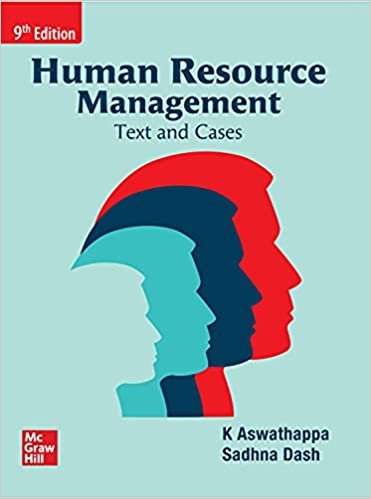The main difference between Personnel Management and HRM is that personnel management is administrative and is mainly concerned with employees and how they can adapt to the organisation. In contrast, HRM is a modern approach integrated with strategic management that centres around the efficiency of human resources including employees and HR operations in the organisation.
The Difference Between HRM and Personnel Management is: –
Here are the critical differences between personnel management and HRM.
| Parameters | Personnel Management | HRM |
| Function | Administrative tasks and maintain relationships with employees | Strategic tasks concerned with optimising human resources and employees |
| Approach | Employee productivity results in job satisfaction; traditional | Employees are the main assets; modern |
| Objective | Meeting organisational policies | Utilisation of employee’s competencies |
| Orientation | Making employees adopt company rules | Developing the competency of each employee |
| Pay based on | Job evaluation | Performance evaluation |
To Read more such informative Blogs Click Here
hradvosrs4u Blogs
Difference Between HRM and PM
Personnel Management – Definition and Approach
Personnel management is about hiring the right employees and maintaining a healthy workforce in an organisation. But a lot happens behind the scenes.
In the book, Principles of Personnel Management (1984), the author, Edwin B Flippo offers this definition.
“Personnel Management is the planning, organising, directing, and controlling of the procurement, development, compensation, integration and maintenance and separation of personnel to the end that individual, organisational and societal objectives are accomplished.”
Functions of Personnel Management
According to Flippo, the personnel manager requires a background in psychology, sociology, economics, philosophy, and management.
There are two main functions of personnel management
- Managerial – The personnel manager fulfils the essential functions of management. As defined by Luther Gullick and Lyndall Urwick, these functions are clubbed under the acronym, POSDCORB. POSDCORB stands for Planning, Organizing, Staffing, Directing, Coordinating, Reporting, and Budgeting.
- Operative – These functions are related to maintaining a healthy workforce and are done routinely. The operational activities include procurement, training and development, maintenance of health and safety, etc.
Approach in Personnel Management
Personnel management is more traditional in that it replaced the concept of labour management in the 1940s. The approach to personnel management is more or less based on the Hawthorne research project of the 1920s, which concluded that employee productivity was directly related to job satisfaction.
HRM – Definition and Approach
HR management deals with optimising the human resources in the organisation. That means it is concerned with managing HR operations along with the workforce to meet organisational goals.
In Armstrong’s Handbook of Human Resource Management Practice, HRM is defined as
“HRM is the managerial utilisation of the efforts, knowledge, capabilities and committed behaviours which people contribute to an authoritatively co-ordinated human enterprise as part of an employment exchange (or more temporary contractual arrangement) to carry out work tasks in a way which enables the enterprise to continue into the future.”
Goals of HRM
- Supporting the company objectives by executing human resource strategies that are part of the business strategy
- Cultivating a high-performance culture
- Ensuring the company has a skilled and talented workforce
- Creating trust among senior management and employees
- Encouraging an ethical approach to managing employees
Approach in HRM
HRM can be considered as a modified version of personnel management. According to Armstrong, in HRM practice, ‘the key resource is people.’ HRM is also considered more ‘holistic’ in that employees in the organisation are considered as ‘assets’ and not as ‘variable costs.’
Comparison: HRM vs Personnel Management
| Basis For Comparison | Personnel Management | Human Resource Management |
| Meaning | An aspect of management that is concerned with employees at work and their relationships within the company. | An essential branch of management that deals with making the optimum usage of organizational human resources to achieve the organizational goals. |
| Objective | Managing people at work | Working for the growth & development of the workforce |
| Approach | Traditional | Modern |
| Treatment of manpower | Machines or Tools | Resource & Asset |
| Type of function | Routine function | Strategic function |
| Basis of Pay | Job Evaluation | Performance Evaluation |
| Management Role | Transactional | Transformational |
| Communication | Indirect | Direct |
| Labor Management | Collective Bargaining Contracts | Individual Contracts |
| Initiatives | Piecemeal | Integrated |
| Management Actions | Procedure | Business needs |
| Decision Making | Slow | Fast |
| Job Design | Division of Labor | Groups/Teams |
| Major Functions | Employee hiring, remunerating, training, and harmony. | Recruitment & staffing, Equal employment opportunity, HR development, Remuneration, Employee relations, Continuos growth, etc. |
Difference Between HRM and Personnel Management Ppt

Salient Features : 1) New chapter on digitalisation of HRM 2) New appendix on Research Topics in HRM 3) New topics such as job grafting, managing employee experience, amended labour 4) laws, 4th industrial revolution and its impact etc. 5) Rewritten sections on topics such as assessment centres, jobs and career, technology etc. 6) Newly introduced features such as Scenario Analysis, Technology in HR and Hands-On Experience to help students bridge the gap between theoretical concepts, its practical application at the workplace, as well as the emerging technology



Add a Comment